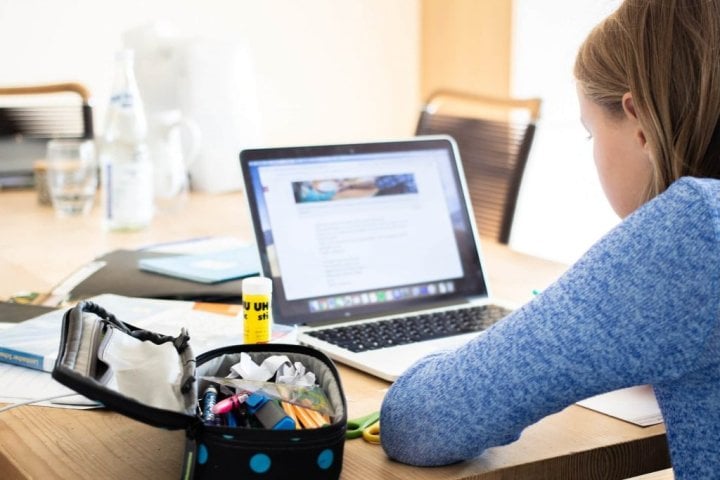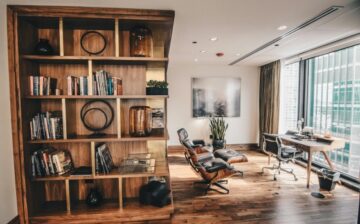
More children are being home-schooled than ever before since COVID came in and shut down the classroom. If you’re worried about disruptions to your child’s education, creating a dedicated study space at home is a great step to take. Whether for schoolwork or homework, a home study space helps your child learn. Here are seven great tips for creating the perfect space.
1) Limited Distractions
Children have an incredible capacity for creativity and, when you’re trying to build an effective home study space, this can often turn into a capacity for distraction. Whatever’s in your child’s eyeline is going to become a source of diverted attention, so the positioning of their desk is the first hurdle to overcome.
Try placing the desk up against the wall rather than at the window to give them less opportunity for daydreaming. You can decorate the space behind the desk with interesting – but attention-focusing – posters.
2) Good Lighting
You may remember your parents telling you off for reading in the dark, and although dreaded ‘eye-strain’ might have been an old wives’ tale, it’s true that a bit of light will help your child focus and learn. Ideally, choose a space that’s flooded with natural light during the day – this kind of light naturally wakes up the brain and keeps children alert. A table lamp on the desk can help them spotlight their work when the nights draw in.
3) Stationery Up
Stocking up on stationery and other desk supplies is essential, as once your kid gets into a work flow you won’t want anything disrupting them. “Keeping these materials organized is a challenge for parents and having a desk with lots of drawers helps,” says Keven Scott, an educator at Write a paper. “Pencils, paper, scissors and rulers can be kept in repurposed cups on the desk.”
4) Phones Out
Sometimes technology can be a helpful study aid, but more often than not a ping of a notification leads down a rabbit hole of distraction. Establishing your child’s study space as a no-phone zone sets a great environment for letting them focus on their schoolwork without temptation. If you need to incentivize their working you can use phone breaks as a tool for demarcating study time and leisure time.
5) Make It Comfy
Make sure your child’s study space is comfortable (without giving them the opportunity to curl up and go to sleep). Ensure their desk is suitable for their size – an adult desk with a computer monitor on top can force children to sit in unnatural positions, leading to posture and spinal issues. Creating a reading nook is a great way to encourage your kid to engage in books – building a space your child actively wants to be in will foster a good attitude toward learning and reading for life.
6) Let Them Own the Space
Giving your child autonomy in the space will mean that learning doesn’t become a chore – you want them to invest in the space and appreciate it. Let your child help when it comes time to decorate and give them as much opportunity to own the space as possible. If you’re repainting, let them choose colors, and allow them to choose posters, art and accessories for the space.
7) Location, Location, Location
There are so many places you can squeeze a study space into your own home – underneath a bunk bed, or in a kitchen nook. When you’re trying to figure out where to locate your child’s study space think about what kind of learner they are. Someone who thrives in silence might prefer the privacy of a bedroom study space, whereas other children might prefer a busy area where background noise helps them concentrate.
8) Limit Other Activities
If you’re able to do so, reserving your child’s study space exclusively for learning is a great way to reinforce the idea that once they sit down at the desk it’s time for work. If, for example, the desk houses a computer monitor that’s also used for computer games and browsing the web, the mixed use of the space will dilute their focus when it’s time to learn. A dedicated study space will make your children dedicated to studying.
Study Up!
In these uncertain times, children’s lives and education are being rudely interrupted. Building a cozy and effective study space for your child is an important step to take, so that while schools may be closed, their learning can continue.
We hope you found this blog post Making Learning Fun: Creating A Home Study Space For Your Kids, useful. Be sure to check out our post Your Guide to Updating a New Home with Children for more great tips!
Have Experience in the Moving Industry? Want an Additional Income Stream? Work With All Around Moving!
Find out how we can help you create a new income. Click here to learn more.





